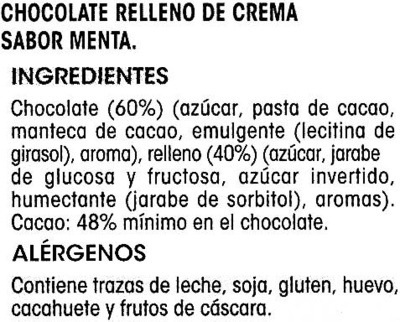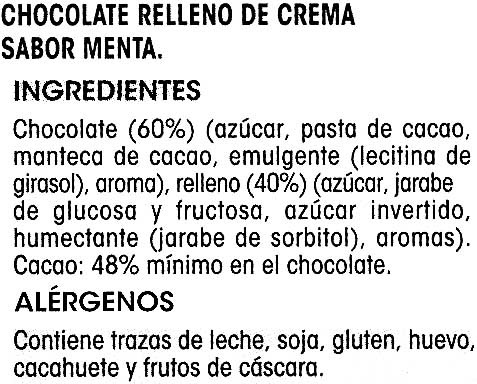Chocolate negro relleno de menta - Alipende - 150 g
Aquesta pàgina del producte no està completa. Podeu ajudar a completar-la editant-la i afegint-hi més dades a partir de les fotos ja disponibles, o fent-ne més amb l'aplicació de androide o iPhone / iPad. Gràcies!
×
Codi de barres: 8421691844995 (EAN / EAN-13)
Nom comú: Tableta de chocolate relleno con sabor a menta
Quantitat: 150 g
Empaquetament: fr:Envase de cartón, pt:Papel de aluminio
Marques: Alipende
Categories: Snacks, Aperitius dolços, Cacau i derivats, Xocolata, en:Filled chocolates
Etiquetes, certificacions, premis:
Vegetarià, Vegà, Punt verd
Llocs de fabricació o processament: Oñate, Guipúzcoa, País Vasco, España
Codi de traçabilitat: ES 25.00135/SS C CE, FABRICANTE Y ENVASADOR:, NATRA OÑATI S.A., PERTENECIENTE A:, NATRA S.A.
Botigues: Ahorramás
Països on es va vendre: Espanya
Matching with your preferences
Entorn
Empaquetament
Transport
Report a problem
Fonts de dades
Producte afegit per javichu
Última modificació de la pàgina del producte per fabi2.
La pàgina del producte, també editada per kiliweb, musarana, packbot, thaialagata, yuka.WDUwdkw2TXZ0OWNoZ3ZFNjBnendvZjVKKzVXM1RISzVGT3MwSVE9PQ.











